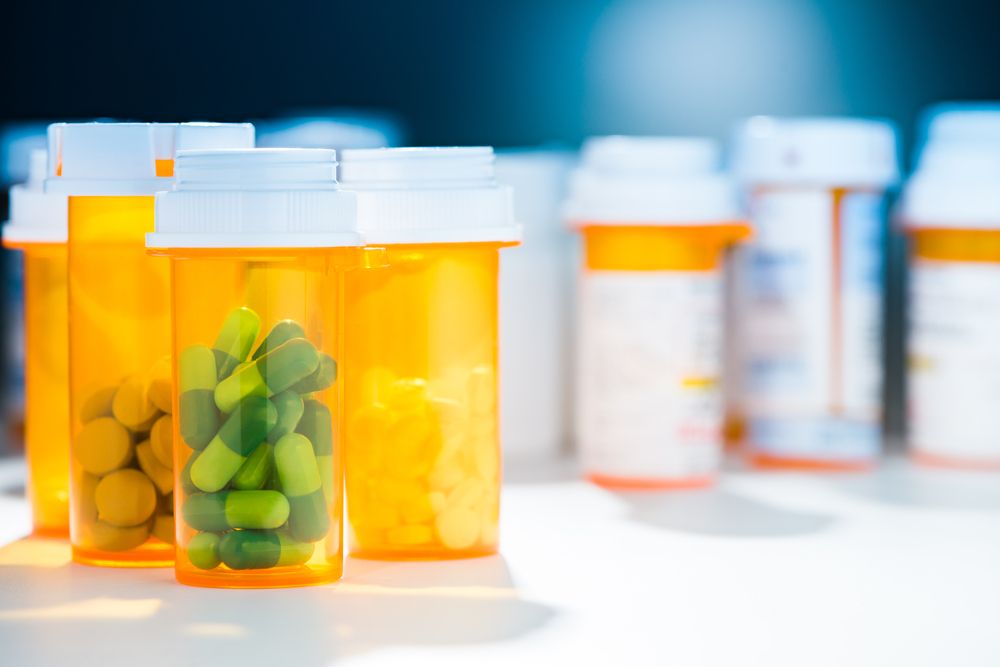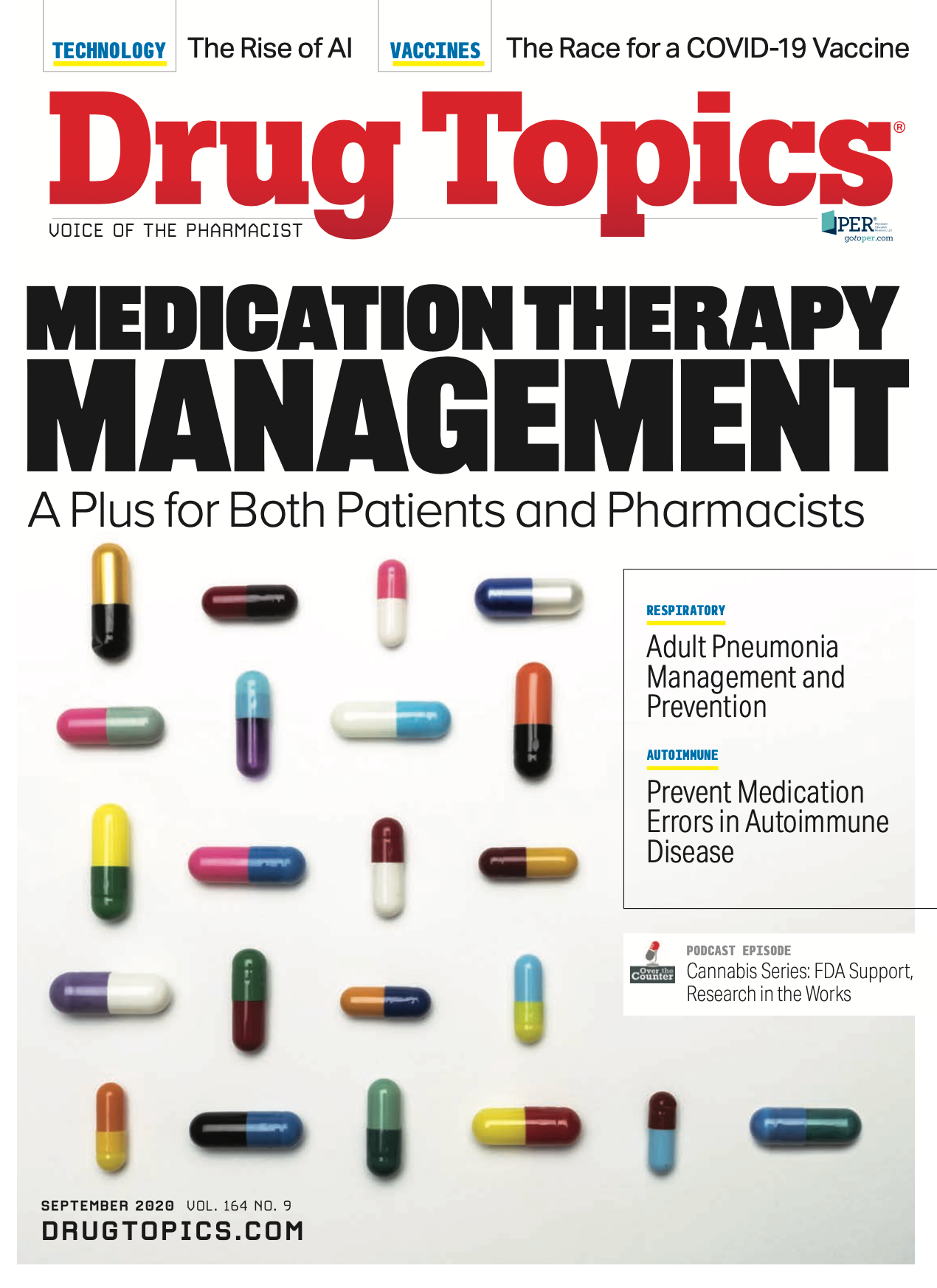A Look at the Year in Generics
The generic pipeline continues to provide significant value to payers and patients as key products in top therapeutic classes lose patent protection.

The generic pipeline continues to provide significant value to payers and patients as key products in top therapeutic classes lose patent protection.
Matt Gibbs, PharmD, president of commercial markets for Capital Rx, Inc, said although the second generic wave peaked in 2018, many impactful generics entered the market over the past 12 months—most notably, the launch of multiple generics for pregabalin (Lyrica; Pfizer) in July 2019.
“Because there wasn’t a single generic with a 180-day exclusivity period, it resulted in an immediate significant price drop for payers and patients,” he said. “Fourth quarter 2019 also saw the first generic for popular contraceptive NuvaRing enter the market, providing patients who prefer a nonsystemic contraceptive a generic option. This will also benefit payers providing $0 contraceptive coverage to their members under the Affordable Care Act, as brand NuvaRing is a key driver of plan spend in the contraceptive category.”
Early 2020 saw the return of generics to the market for albuterol rescue inhalers ProAir HFA and Ventolin HFA. Generic albuterol inhalers utilizing chlorofluorocarbon propellants existed in the market by the late ’90s, but the requirement to change to alternate propellants shifted these products back to brands.
“The availability of generics in the class will benefit both patients and plans in mitigating spend in the asthma category,” Gibbs said.
He feels the biggest notable generic coming in 2020 is the availability of generic emtricitabine/tenofovir (Truvada; Gilead) for use in HIV preexposure prophylaxis (PrEP).
“As plans begin to implement $0 ACA coverage for PrEP, the availability of generic Truvada will significantly decrease overall cost to plans as we see awareness of and access to PrEP improve across the US,” Gibbs said. “This improved awareness and focus on access to PrEP is one step in the global and US goals of getting to zero new HIV transmissions by 2030.”
Slow to Develop
Ryan Schmidt, associate director of formulary services for Madison, Wisconsin–based Navitus Health Solutions, says that overall, the generic market this past year has been relatively slow.
“There haven’t been many blockbuster generic releases, and the ones that hit the news are generally ‘authorized generics,’ where the manufacturer of the generic product either has an agreement with the brand manufacturer, or in some instances is the brand manufacturer,” he said. “The other thing that limits impact of these releases is a lot of them have come from classes with multiple alternative generic options already, meaning the amount of use in the brand space has been limited.”
Ross Goetz, PharmD, director of business development and national pharmacy compliance administrator for Healthwarehouse.com, noted that digital companies with direct-to-consumer models have increased access to generic medications at an affordable price, making generic drugs more desirable to the consumers opting to manage their own cost portfolio.
Still, when referring to abbreviated new drug application (ANDA) approvals,or first-time approvals of generic drugs, he calls 2020 “a weak year,” citing a few HIV therapies pending generic launch, and the generic for varenicline (Chantix; Pfizer), which has been delayed since the initial date. At press time, the FDA has so far approved 35 first-time generics.1 In 2019, the FDA approved 107 first generic drugs out of a total of 1014 approved or tentatively approved ANDAs, according to the 2019 Office of Generic Drugs annual report.2
Shashank Upadhye, JD, a pharmaceutical patent attorney with Chicago, Illinois-based Upadhye Cwik LLP, who has practiced in generic drug law for more than 20 years, said it’s been a tough year for companies that are in just traditional, simple solid oral dosage forms.
An exception, he noted, is Mylan, which obtained recent approval for its biosimilar for insulin glargine— called Semglee, which is a biosimilar to Sanofi’s Lantus insulin.
“Mylan had won some patent litigation and thus had removed the patent obstacle. But it finally won FDA approval for its pen and vial product,” he said. “Mylan [and its production partner Biocon] had some troubles getting approval. It is a complex product, and thus it was not a question of simply copying the Lantus product. Now patients have new options, with hopefully better pricing, now that the FDA has approved more insulins.”
Financial Matters
The most notable generic products, Schmidt shared, have not had the major financial impact one would typically expect over the last year.
“Generic insulin products offer significant price decreases for those patients without insurance, reducing prices to where they were back in 2012,” he explained. “However, rebates offered on the original brand products still make the brand medications less expensive to plans in most situations, meaning we haven’t seen these have impact on overall spend.”
Similarly, a number of generic inhalers have come to market for common products such as Advair, Symbicort, Proair, and Ventolin. Although the increased competition has had some impact on overall spending, major savings opportunities haven’t risen yet, as the complexity of these devices have prevented a scenario where multiple low-cost generic products are available.
Experts agree that there is an unmet need for more less expensive, generic versions of complex medications in the market.
“Significant savings to payers and the federal government from approving more generic versions of complex medication could be realized,” Bob Lobo, PharmD, director of clinical programs at Vanderbilt University Medical Center, Nashville, Tennessee, told Drug Topics® in a previous interview.3 He cited a recent study on the economic burden associated with extended-release (ER) versus immediate-release (IR) formulation among Medicare and Medicaid beneficiaries, in which the findings showed a potential annual cost savings of $2.6 billion by switching certain ER drugs to comparable generic IR formulations.4 The study looked at only 20 ER oral medications, but it suggests that the annual savings from greater access to generic medications are quite significant.3
According to Schmidt, the drug with one of the largest effects on spending in the past 12 months has been pregabalin, the generic equivalent to Lyrica.
“There were multiple manufacturers ready to go at launch, meaning costs for the generics were significantly lower than the brand at launch,” he said. “This is important as it helps drive down patient cost, regardless of copay or coinsurance, helping to facilitate conversion to the generic product, saving both the patient and the plan money right away.”
Conversely, ramelteon, Rozerem’s equivalent, was first released at a similar time, but due to lack of competition in the market, has retained a higher cost relative to other generic medications in the class.
“Pregabalin has dropped in price by over 95% compared with brand Lyrica, [which also took an approximately 5% price increase on January 1, 2020,] and is covered nearly universally,” Schmidt said. “Ramelteon, on the other hand, still costs close to $100 per month.”
Goetz agreed that pregabalin has been the most significant generic over the past year.
“When you look into medications for nerve pain, there is not a great depth of options. Outside of narcotic pain medications, gabapentin stood as the most cost-effective option,” he said. “Although gabapentin comes tied with challenges like a notable [adverse effect] profile, it is often the drug of choice on insurance formularies. For those who rely on their insurance coverage to afford medications, paying for brand name Lyrica was simply not an option. Now available as generic pregabalin, patients can more comfortably elect to switch away from gabapentin without a major cost burden, if any.”
A Shifting Market
Due to the coronavirus disease 2019 (COVID-19), the FDA has stopped conducting foreign inspections. Given that more than 80% of the generic drugs sold in the United States are made outside the country, the lack of inspections has resulted in delayed or aborted new generic drug launches.
Upadhye said COVID-19 has caused several problems, including decreased profitability for existing generic companies’ products; increased price pressures by the buyers who them- selves are facing business pressures; pressures on existing patent litigation to either do very little to advance the case or to settle the case quickly on whatever terms being offered; and the FDA’s refusal to conduct foreign inspections, resulting in delayed or aborted new generic drug product launches or delays in relaunches.
It’s not a surprise that the pandemic is affecting the generic drug market, as when the disease was spreading rapidly in March, there was a major rush to refill medications, leading to a large increase in claims and even shortages. This was immediately followed by a drop-off in overall claims volume, which is now returning closer to normal.
“One major shift is from 30-day claims to more patients getting 90-day supplies via delivery or mail order,” Schmidt said.“The interesting component of this is that maintenance medications seem to have rebounded well, whereas acute medications aren’t rebounding quite as quickly. This isn’t as surprising, as many elective clinical visits are being delayed, and general improved health precautions are likely leading to less non-COVID infections.”
From a new product perspective, the FDA is still in full swing, and the industry has continued to see new approvals of both brand and generic products. The impact of these new releases may be seen a couple of years down the road as some clinical trials have gone on hold or been delayed due to COVID-19.
Goetz believes the market is shifting heavily toward convenience and safety over price alone.
“Utilization of telehealth services reached an all-time high in April 2020, while ambulatory prescriber practices were down roughly 60% in office visits,” he said. “Now that patients are more aware of the options available, it can be expected that they will consider the financial and personal impact of each option as they weigh their plans for their future. As we have seen with many areas of modern commerce, the power is no longer with the large chains with storefronts in every area; it falls with the companies who can provide a service at a fair price, with a larger focus on convenience than ever before.”
References
1. FDA. First generic drug approvals. Updated July 14, 2020. Accessed August 12, 2020. https://www.fda.gov/drugs/drug-and-biologic-approval-and-ind-activity-reports/first-generic-drug-approvals
2. FDA. 2019 Office of Generic Drugs annual report. February 2020. Accessed August 12, 2020. https://www.fda.gov/media/135329/download
3. Schieszer J. Barriers coming down for complex generic drug products. Drug Topics®. April 14, 2020. Accessed August 12, 2020. https://www.drugtopics.com/view/barriers-coming-down-complex-generic-drug-products
4. Sumarsono A, Sumarsono N, Das SR, et al. Economic burden associated with extended-release vs immediate-release drug formulations among Medicare Part D and Medicaid beneficiaries. JAMA Network Open. 2020;3(2):e200181. doi:10.1001/jamanetworkopen.2020.0181

Study: Antibiotic Prescriptions for Children Drop Significantly Amid Pandemic
July 26th 2021A new study published in Pediatrics showed a decrease in prescription drug dispensing for children during the COVID-19 pandemic, including for infection-related medicines and chronic disease treatments.